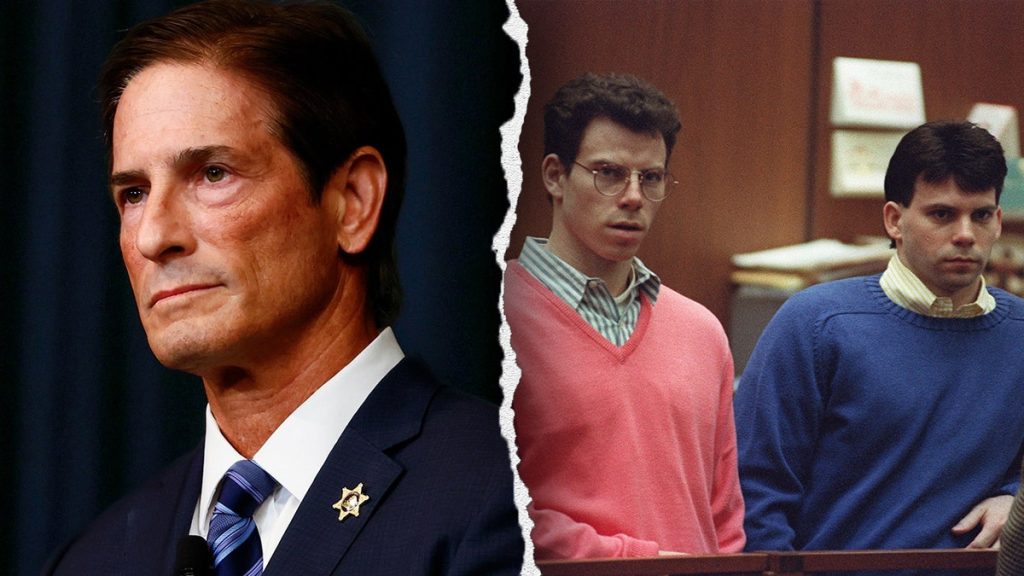The Menendez brothers, Lyle and Erik, might face more challenges in their quest for freedom after recent insights from their Comprehensive Risk Assessment (CRA) surfaced.
These revelations came to light during a court session where Los Angeles County District Attorney Nathan Hochman attempted to pause the resentencing process. However, Judge Michael Jesic dismissed these efforts, stating that the CRA did not present any significant new evidence.
Nathan Hochman presented findings from the CRA, conducted by state psychologists, which assess the likelihood of the Menendez brothers committing violence upon release. Hochman argued that the brothers are not “low-risk” as previously thought, but rather pose a higher danger. The reports highlighted recent incidents involving contraband, specifically cell phone possession, by both brothers.
Focusing on Lyle Menendez, Hochman claimed that his actions demonstrated deceit, particularly regarding the contraband phone. He noted that Lyle seemed to downplay his rule-breaking behavior, displaying a sense of entitlement. Hochman suggested that Lyle should have maintained better behavior, given the pending resentencing.
Instead, Hochman argued, Lyle’s behavior showed a willingness to prioritize his own needs, accompanied by narcissistic tendencies. In Erik’s case, the report painted a picture of immaturity and susceptibility to negative influences, including those from his brother. Recent infractions included involvement in drug dealing and aiding other inmates with tax fraud.
Former federal prosecutor Neama Rahmani commented that the Menendez case is heavily political. Rahmani explained that Governor Gavin Newsom’s decision to order the CRA before the possibility of parole was unusual. Normally, such reports would only surface when parole is an immediate consideration.
Judge Jesic is set to weigh factors such as rehabilitation, responsibility acceptance, prison disciplinary history, sentence fairness, and victim impact. Los Angeles attorney Tre Lovell remarked that while the CRA holds weight, it is not definitive. Both sides will have the opportunity to question the authors of the assessment to test its conclusions.
Lovell emphasized the importance of witness and expert testimony in the resentencing decision. Judge Jesic highlighted the subjective nature of the state psychologists’ conclusions, noting they are not open to cross-examination in his court. He also mentioned the warnings about using the CRA beyond the state parole system.
Defense attorney Mark Geragos criticized Hochman for allegedly misrepresenting the CRA conclusions, calling the situation a “dog and pony show.” Geragos questioned the significance of cell phone violations in prison, pointing out they were previously known. He even claimed responsibility for notifying the former DA about the cell phone infractions.
Geragos invited Hochman to visit the Menendez brothers in prison to observe their achievements over the past 35 years. The Menendez brothers are set to return to the Van Nuys West Courthouse for continued resentencing proceedings on May 13 and 14. The unresolved issues surrounding the risk assessment report make these dates critical for their future.
As the brothers seek resentencing, the focus remains on their 1989 conviction for the murder of their parents, Jose and Kitty Menendez. The court’s decision will hinge on a careful examination of the CRA and other crucial testimony. The proceedings are closely watched, with significant implications for both the brothers and the broader legal system.
The Menendez case continues to captivate public attention, reminding us of the complexities involved in criminal justice. With so much at stake, each detail and testimony will be scrutinized as the case unfolds. The upcoming court sessions promise to be pivotal in determining the brothers’ fate.



